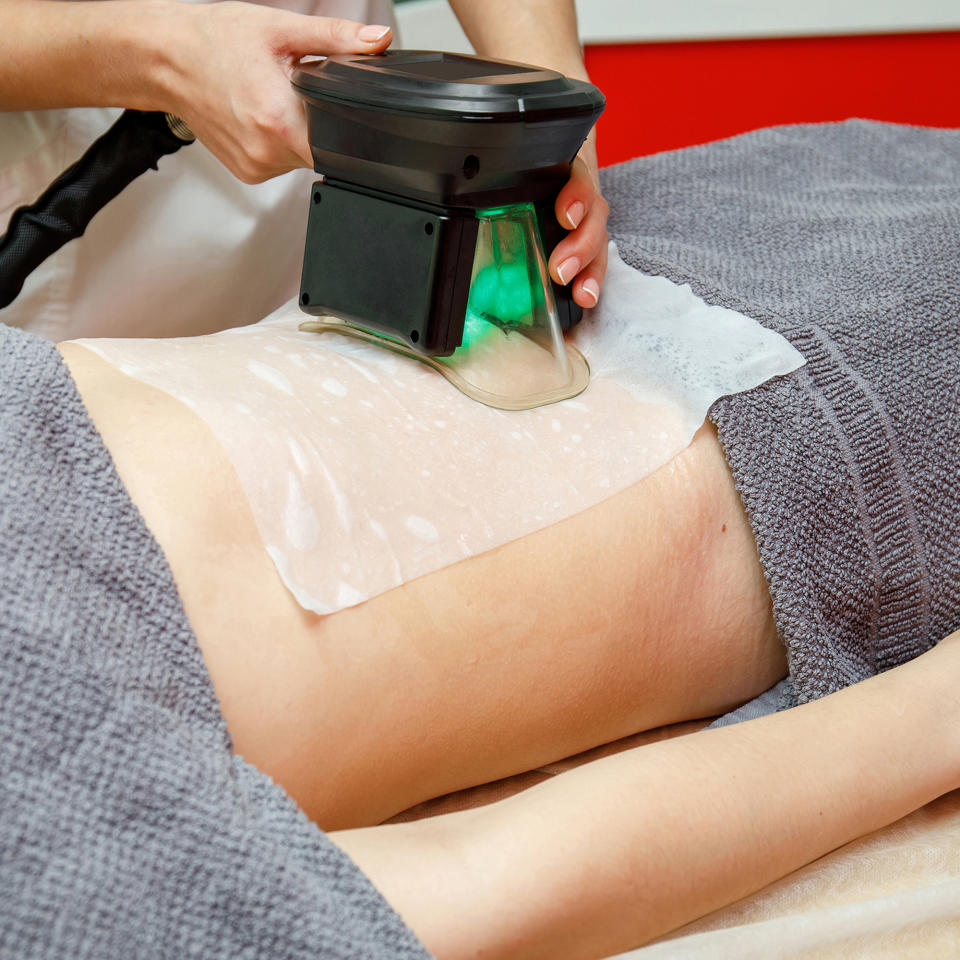What is 'CoolSculpting? Experts discuss the fat-freezing technique
We're always looking for new advancements that help make shedding pounds and toning up easier. A relatively new, trendy cosmetic procedure called CoolSculpting promises just that: claiming it can result in permanent fat reduction in specific areas. Seen as an alternative to liposuction, the non-invasive technique reduces fat cells in targeted areas. TODAY anchors Savannah Guthrie and Jenna Bush Hager gave CoolSculpting a try in 2018 and reported back with their results.
The procedure, also known as cryolipolysis, is described as safe, with little recovery time in most cases. But does it really work? TODAY Health spoke to several doctors and practitioners to find out more about the treatment.
What is CoolSculpting?
The treatment is "literally freezing your fat cells" and destroying them, according to Lindsay Malachowski, operations manager at SKINNEY Medspa and Wellness, who oversees three locations where CoolSculpting is performed.
The treatment uses very low temperatures, or cryotherapy, to destroy fat cells. Research into the topic began, according to Malachowski, when scientists noticed that children who sucked on popsicles would develop cheek dimples, a sign of fat breakdown. After years of research and use, she believes it is "the most effective, non-invasive fat reduction treatment that exists on the market."
CoolSculpting can only work on certain body image concerns, Dr. Vince Poblante, a plastic surgeon at the Cleveland Clinic, explained. Something like significant excess skin cannot be solved by CoolSculpting, but targeting fat in specific areas is an ideal way to use the procedure. Patients typically come to him looking for advice on body contouring and he explained that patient selection is a key part of the process.
Malachowski compared the procedure to a spot treatment.
"We cannot spot treat through diet and exercise alone," she said.
The procedure can be costly — both Malachowski and Poblante cited thousands of dollars for procedures — and insurance carriers do not cover it, Poblante said. The advantage is that the results are permanent and the treatment is non-invasive and requires very little recovery time.
What happens during CoolSculpting?
Almost any body part with excess fat can be sculpted using the treatment and popular areas include the abdomen, the arms or the chin, according to Malachowski.
How does CoolSculpting work? Poblante described to TODAY what the process typically entails.
"Once a patient is approved for CoolSculpting, they'll show up, they'll be marked," he explained. "The applicator, or the template, is applied onto the patient."
The handheld applicator is a device that applies controlled cooling to the targeted fat areas. Practioners will then move a it over the skin of the area, administering suction and cooling technology.
The procedure lasts about 45 minutes per area, according to Poblante. It's possible to do two body areas at once - such as both hips - and Poblante said that that's typically advantageous, since it saves time.
Are there side effects?
The FDA cleared CoolSculpting in 2012, initially for use in abdomen and flank areas before clearing it for multiple spots on the body. Clinical trials have confirmed the overall safety of the treatment.
According to Malachowski, the most common side effects are things like swelling, redness, soreness, numbness, tingliness or discomfort, but those symptoms should all fade within a few days.
"There's little to no downtime," she explained. "Most people are a good candidate for the procedure."
According to the American Society of Plastic Surgeons, there is a rare complication that occurs in less than one percent of procedures where patients will be affected by something called "paradoxical fat hyperplasia." In these cases, there will be an "unexpected increase" in the number of fat cells.
According to the ASPS, this complication is three times more likely in men than in women, and is seen more in patients of Hispanic or Latino descent. The complication can be fixed with liposuction.
There are some cases where a patient may not be able to undergo the procedure, such as if they are on a medication that could conflict with the treatment, have a condition that will put them at risk, or if they have had a hernia in the affected area.
Does CoolSculpting work?
You're likely wondering: Does CoolSculpting really work? Patients don't see results right away. According to Malachowski, it takes about two or three months for patients to see noticeable results, and some body areas may require multiple rounds of treatment to fully complete. However, areas can be retreated after just four to six weeks, depending on the case.
"When we meet with someone, if you have two or three inches of tissue in an area that you're looking to reduce, you may need two or three treatments in that area if you're looking to reduce almost all of that tissue there," Malachowski said. "We try to be really honest and really explain to people how much treatment they might need."
Poblante said that generally, he recommends two treatments per area.
"It's not an overnight thing," he explained.
However, the results are typically in line with what patients expect, he said. Malachowski said that a treatment typically removes between a half an inch and one inch of fat from the targeted area.
Poblante said that it's important for patients to determine their own needs, as well as research their doctors, when considering CoolSculpting.
"They should get an honest and realistic evaluation and recommendation," he said.

